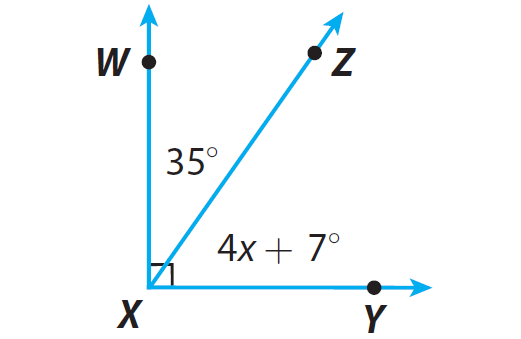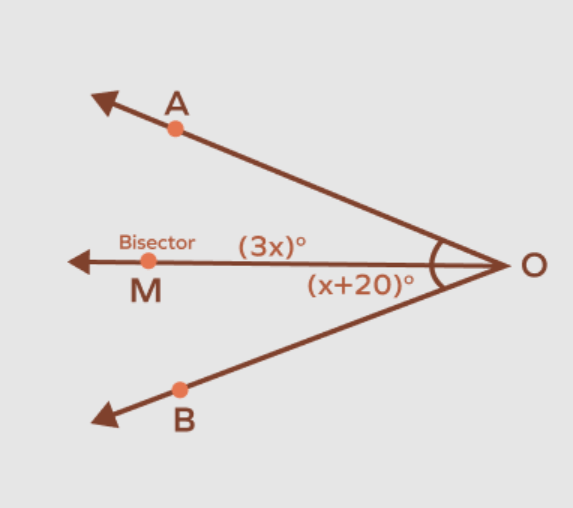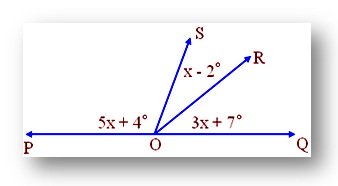Write out the midpoint and distance formulas.
Midpoint: ((x_1+x_2)/2, (y_1+y_2)/2)
Distance: c=sqrt((x_2-x_1)^2+(y_2-y_1)^2
What angle relationship do <BOC and <COD have?

They are complementary.
Find the midpoint of the segment AB with endpoints A(-2, 6) and B(-10, 1).
((x_1+x_2)/2, (y_1+y_2)/2)
((-2+(-10))/2, (6+1)/2)
(-12/2, 7/2)
(-6, 3.5)
What angle is a linear pair with <EOD?
<AOE or <COD
The name given to opposite angles formed by the intersection of two lines.
What is vertical angles.
Find the length of the segment AB with endpoints A(-2, 6) and B(-10, 1).
c=sqrt((x_2-x_1)^2+(y_2-y_1)^2)
c=sqrt((-10+2)^2+(1-6)^2)
c=sqrt((-8)^2+(-5)^2)
c=sqrt(64+25) = sqrt(89)
Find the value of x.

\angleWXZ+\angleZXY=90^o
35+4x+7=90
4x+42=90
4x=48
x=12
Two angles that are adjacent and form a straight line together.
What are a linear pair.

4x+13=3x+17
x=4
BM = 3(4)+17 = 29
In the diagram below, OM bisects <AOB. What is the measure of <AOB?

\angleAOM=\angleMOB
3x=x+20
2x=10
x=10
\angleAOB=2(x+20)=2(10+20)=60
Find the perimeter of polygon ABCD below.

AB = 4
BC: c^2 = 1^2 + 3^2
c^2 = 10
BC = sqrt(10)
CD: c^2 = 2^2+5^2
c^2 = 29
c = sqrt(29)
AD = 1
perimeter: 5+sqrt(10)+sqrt(29)
Find the measure of <POS.

\anglePOS+\angleSOR+\angleROQ=180
5x+4+x-2+3x+7=180
9x+9=180
9x=171
x=19
\anglePOS=5(19)+4=99